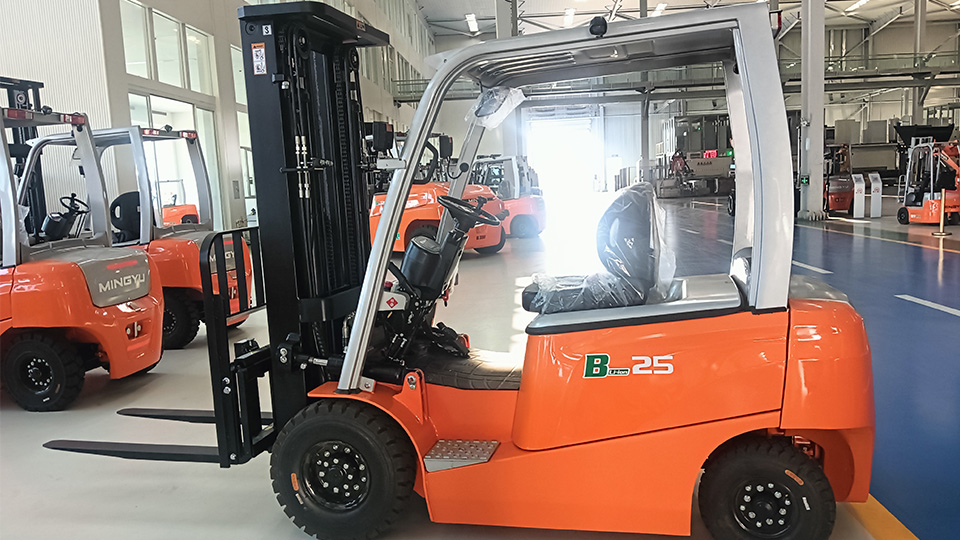
A forklift license is an essential credential for anyone who wants to operate a powered industrial truck (PIT). This "license" is actually a certification that an employer issues to an employee after they have successfully completed a comprehensive training program. It is a legal requirement mandated by the Occupational Safety and Health Administration (OSHA) in the United States and similar regulatory bodies in other countries. Getting certified isn't just about complying with the law; it's about ensuring the safety of the operator and everyone else in the workplace.
This article will walk you through the process of obtaining your forklift license, from understanding the legal requirements to completing the necessary training and evaluation.
Understanding the Legal and Safety Requirements
Before you can get your forklift license, you must meet some basic requirements. First, you need to be at least 18 years old to operate a forklift. This is a non-negotiable rule. Second, you must be physically and mentally capable of operating the equipment safely. This includes having good vision and hearing and being free from any medical conditions or medications that could impair your ability to operate the machine.

The most important part of the legal framework is OSHA's standard 29 CFR 1910.178, which dictates that every forklift operator must be trained and certified by their employer. This training must include a combination of formal instruction, practical training, and a final evaluation. It's a common misconception that an online course alone is enough, but OSHA requires hands-on experience and a performance evaluation specific to the equipment and workplace you'll be using.
The Three-Step Certification Process
Getting your forklift license involves three distinct steps designed to ensure you have both the theoretical knowledge and practical skills to operate a forklift safely.
Step 1: Formal Instruction
The first step is a formal instructional component. This is where you learn the foundational knowledge needed to operate a forklift. This can be done in a classroom setting, through videos, interactive computer programs, or written materials. The curriculum is comprehensive and covers a wide range of topics, including:
Forklift Basics: You'll learn about the different types of forklifts (e.g., electric, internal combustion), their components, and their specific uses.
Safety Principles: A key part of the training is understanding the physics of a forklift, especially the concept of the stability triangle. This explains how a forklift's center of gravity works and why things like overloading or turning too quickly can cause a tip-over.
Workplace Hazards: You'll be trained to identify and navigate the unique hazards of your specific workplace, such as narrow aisles, ramps, or pedestrian traffic.
Operating Procedures: This covers everything from the pre-operation inspection to proper start-up, shutdown, and parking procedures.
Most online forklift certification courses satisfy this formal instruction requirement and provide a certificate of completion that you can present to a current or future employer. These courses often include a written test to ensure you've absorbed the material.
Step 2: Practical Training
The second step is the hands-on portion of the training, which is typically conducted at your workplace under the supervision of a qualified trainer. A qualified trainer is someone with the knowledge, experience, and training to effectively instruct and evaluate forklift operators. This is a critical step because it applies the theoretical knowledge from step one to a real-world setting. During this phase, you will practice:
Vehicle Inspection: Performing the pre-operation inspection on the specific forklift you'll be using.
Maneuvering: Driving the forklift forward and in reverse, steering in tight spaces, and navigating an obstacle course.
Load Handling: Safely picking up, transporting, and setting down various types of loads. You'll learn how to properly secure a load and operate at a safe height.
Step 3: Performance Evaluation and Certification
The final step is an evaluation to determine your competence as an operator. The qualified trainer will observe you performing the tasks learned in the practical training. This isn't just a simple test; it's a comprehensive assessment to ensure you can operate the forklift safely and effectively in the workplace. Once you have successfully demonstrated your proficiency, your employer will issue a forklift certification. This certification must include:
Your name
The date of the training
The date of the evaluation
The name of the person who conducted the training and evaluation
This document is your official "forklift license" and is valid for a period of three years.
Recertification and Refresher Training
A forklift license isn't a permanent credential. OSHA requires that operators' performance be re-evaluated at least once every three years. Refresher training and evaluation are also required more frequently if:

The operator is involved in an accident or a "near-miss."
The operator is observed operating the forklift unsafely.
The operator is assigned to a different type of forklift.
There are changes in the workplace that could affect safe forklift operation.
This ensures that operators' skills stay sharp and that they remain knowledgeable about the latest safety protocols and any new hazards in their environment.
Here's a video on forklift training for new operators that's great for understanding the basics of operation and safety Forklift Training for New Operators.
Name: selena
Mobile:+86-13176910558
Tel:+86-0535-2090977
Whatsapp:8613181602336
Email:vip@mingyuforklift.com
Add:Xiaqiu Town, Laizhou, Yantai City, Shandong Province, China